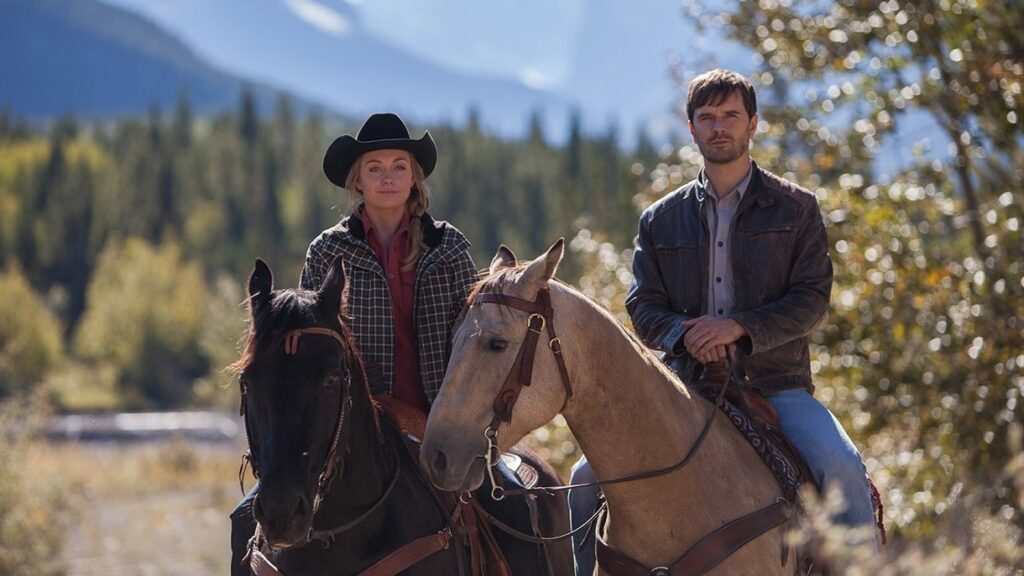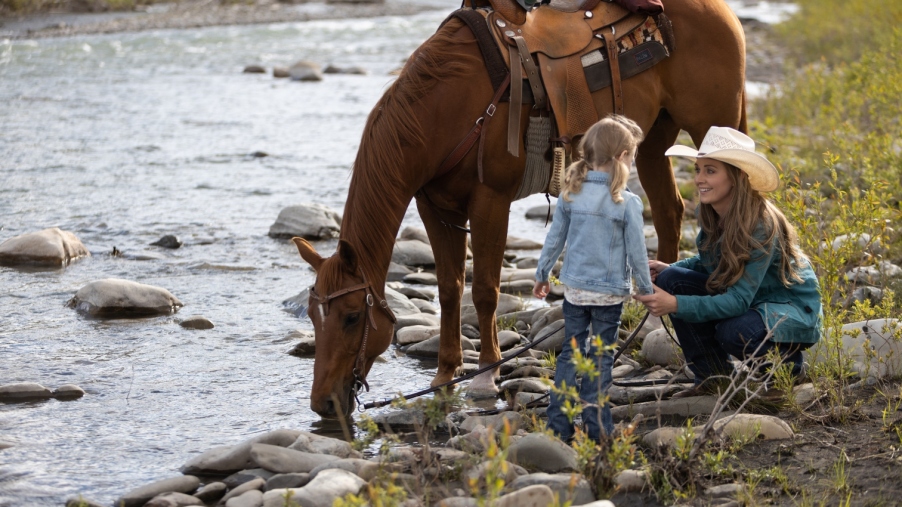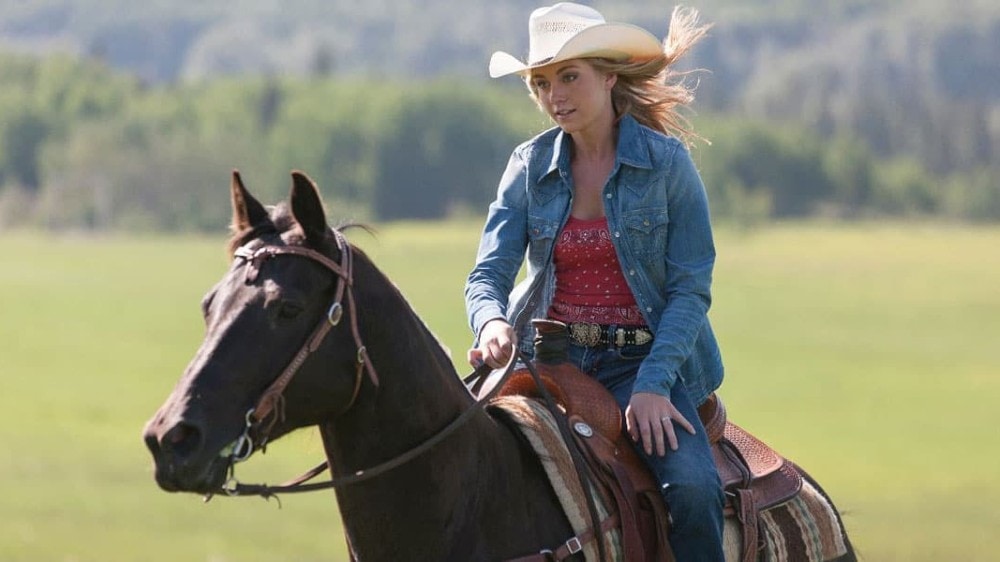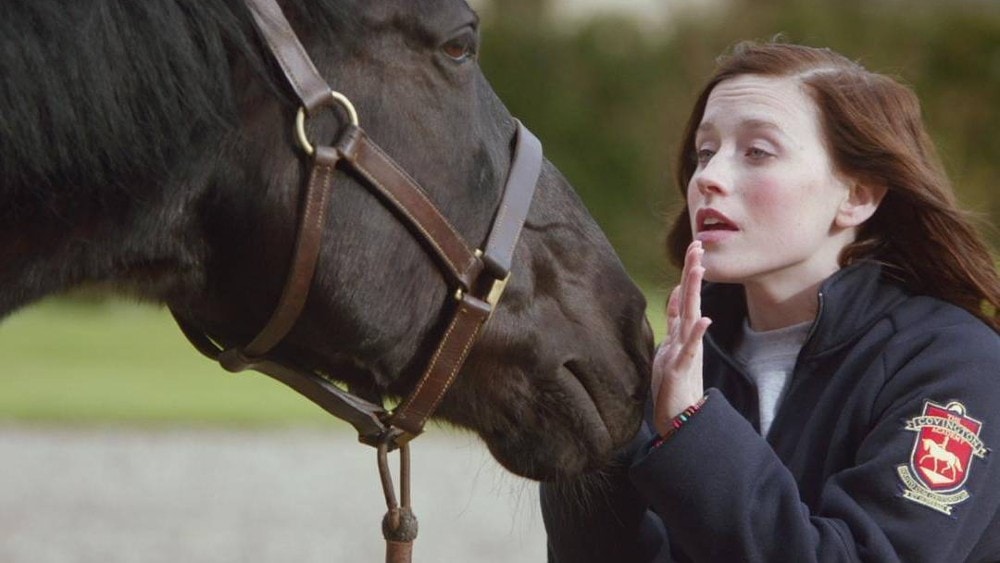Have you ever noticed how horseback riding seems to have made its way into almost every television show at some point? From period dramas to action-packed adventures, it seems like horses always find a way to steal the spotlight. But why is that? Well, in this article, we’ll dive into the influence of horseback riding on television shows and explore the reasons behind its popularity.
It’s no secret that horseback riding has been a popular activity for centuries, so it’s no surprise that it has found its way onto our TV screens. From knights in shining armor to cowboys in the Wild West, horses have become a symbol of adventure, freedom, and power. Their presence in television shows not only adds an element of excitement but also helps to transport viewers to different worlds and time periods. So, whether it’s a medieval fantasy epic or a modern-day drama, horseback riding brings a sense of authenticity and adds to the overall storytelling experience.
In this article, we’ll take a closer look at some iconic television shows that have featured horseback riding as a prominent aspect of their storytelling. We’ll also explore the cultural and historical significance of horseback riding, as well as its impact on the portrayal of characters and settings in TV shows. So, saddle up and get ready to discover the fascinating influence of horseback riding on television!
Horseback Riding and its Influence on Television Shows
Horseback riding has a rich and fascinating history that spans thousands of years. It has been a significant part of human civilization, transporting people and goods, serving as a mode of communication, and even playing a role in warfare. Over time, horseback riding evolved from a purely practical form of transportation to a beloved recreational activity, and it has left a lasting mark on various aspects of our society, including popular culture.

The Origins of Horseback Riding
The origins of horseback riding can be traced back to ancient civilizations such as the Mesopotamians, Egyptians, and Greeks. These societies harnessed the power of horses and developed rudimentary riding techniques, predominantly using horses for their military capabilities. The domestication of horses revolutionized transportation and warfare, allowing civilizations to expand their territories and facilitate trade among distant regions.
Early Forms of Equestrianism
The relationship between humans and horses deepened as equestrianism emerged. In ancient Greece, horseback riding became a popular sport and a symbol of status and prestige. Riders competed in various equestrian events such as chariot racing, horse racing, and equestrian games. These competitions showcased the athleticism and skill of both riders and horses, laying the foundation for the organized horseback riding events we see today.
Evolution of Horseback Riding Techniques
Throughout history, horseback riding techniques continued to evolve. The invention of the stirrups in the 4th century AD revolutionized horseback riding by providing riders with increased stability and control. The development of saddles further enhanced riding comfort and allowed riders to stay securely seated while performing complex maneuvers. As civilizations grew and merged, different cultures adopted and adapted equestrian practices, resulting in various styles of horseback riding that are still practiced today.
Different Styles of Horseback Riding
Horseback riding styles can be broadly categorized into English and Western riding. While these two styles have distinct characteristics and origins, they share a common bond in their passion for horsemanship. Let’s explore some of the popular styles of horseback riding:
English Riding
English riding, also known as “hunt seat” riding, emerged in Europe during the 17th and 18th centuries. It focuses on the rider’s balance, finesse, and communication with the horse. English riding encompasses various disciplines such as dressage, jumping, and eventing. The riders typically use lightweight saddles and employ subtle aids to convey commands to their horses.
Western Riding
Western riding originated in North America during the 19th century and was influenced by the horsemanship of cowboys. Western riding emphasizes a deep and secure seat, reins held with one hand, and the use of specialized western saddles and tack. It is often associated with activities such as ranch work, rodeo events, and trail riding.
Dressage
Dressage is a discipline that originated in ancient Greece and continues to be a popular form of equestrian performance. It involves precise and controlled movements executed by the horse and rider. Dressage emphasizes harmony, balance, and communication between the two. It is often referred to as “horse ballet” due to the elegance and grace displayed during performances.
Jumping
Jumping, also known as show jumping or stadium jumping, is a thrilling discipline that tests the horse and rider’s agility and skill over a course of jumps. Riders must navigate obstacles like fences and crossbars, aiming for accuracy and speed. Jumping competitions are a staple in equestrian events and are widely popular around the world.
Polo
Polo, often called “the sport of kings,” has a long and prestigious history. Originating in ancient Persia, it is a high-speed team sport played on horseback. Players aim to hit a small ball into the opposing team’s goal using long-handled mallets. Polo is renowned for its fast-paced action and demanding horsemanship skills.
Trail Riding
Trail riding offers riders an opportunity to explore nature’s beauty while enjoying the companionship of their horse. It involves riding on designated trails through forests, mountains, or other outdoor landscapes. Trail rides can vary from relaxed leisurely rides to challenging adventures, catering to riders of all skill levels.

Popular Horse Breeds for Riding
Horseback riding features a wide range of horse breeds that are well-suited for different disciplines and riding styles. Here are some popular horse breeds commonly used for riding:
Thoroughbred
Thoroughbreds are known for their speed, athletic build, and competitive spirit. Originally bred for horse racing, they excel in disciplines such as jumping, eventing, and dressage. Thoroughbreds possess the stamina and agility required for high-performance riding.
Quarter Horse
The Quarter Horse is a versatile breed that excels in Western riding and ranch work. It is valued for its agility, strength, and calm temperament. Known for its ability to sprint short distances, the Quarter Horse is synonymous with cowboy culture and rodeo events like barrel racing and team roping.
Arabian
Arabians are one of the oldest and most influential horse breeds in the world. Renowned for their beauty, endurance, and spirited nature, Arabians excel in endurance riding, dressage, and show jumping. They have a distinctive dished face and a high tail carriage, adding to their elegant appearance.
Appaloosa
Appaloosas are known for their unique coat patterns, which can include spots, speckles, or blankets. They are versatile horses that excel in Western riding disciplines, including reining, cutting, and pleasure riding. Appaloosas are highly valued for their intelligence and calm temperament.
Friesian
Friesians are a striking breed known for their majestic appearance, long flowing manes, and feathered legs. They have an elegant and powerful presence that captivates spectators. Friesians excel in dressage due to their elevated movements and willingness to perform.
Warmbloods
Warmbloods refer to a group of horse breeds that are a cross between hot-blooded and cold-blooded breeds. These horses possess a combination of athleticism, strength, and trainability. Warmbloods excel in various equestrian disciplines such as jumping and dressage, and they are highly sought after in the competitive riding world.
Equipment and Gear for Horseback Riding
To ensure your safety and enhance your riding experience, it is essential to utilize the proper equipment and gear. Here are some key items commonly used in horseback riding:
Saddles
Saddles are a vital piece of riding equipment that provides comfort and support for both the rider and the horse. English saddles are lightweight and offer a closer contact feel, allowing for increased communication between the rider and the horse. Western saddles are larger and provide more stability and security for activities such as trail riding and ranch work.
Bridles and Bits
Bridles and bits are used to control and communicate with the horse. The bridle consists of various components, including the headstall, cheekpieces, and reins. Bits, which are inserted into the horse’s mouth, come in different designs and materials, offering varying levels of control and communication.
Riding Boots
Riding boots are designed to provide support, grip, and protection for the rider’s feet and lower legs. They often have a heel to prevent the foot from slipping through the stirrup and a tall shaft to protect the rider’s legs from friction with the horse’s sides or saddle.
Helmets
Safety should always be a top priority when horseback riding, and helmets play a crucial role in protecting the rider from head injuries. It is important to choose a helmet that meets safety standards and fits properly to ensure maximum protection.
Gloves
Gloves offer riders improved grip on the reins, protect the hands from blisters or rubbing, and provide an extra layer of warmth in colder weather. They come in a variety of materials and styles to suit different riding preferences.

Health Benefits of Horseback Riding
Apart from being a thrilling and enjoyable activity, horseback riding offers numerous health benefits. Whether you are a beginner or an experienced rider, the physical and mental advantages of horseback riding are undeniable.
Physical Fitness
Horseback riding is an excellent form of exercise that engages various muscle groups and improves overall fitness. The act of riding itself requires core stability, balance, and coordination. As riders navigate their horses through different movements and exercises, they engage muscles in their legs, arms, back, and abdomen, leading to improved strength and endurance.
Improves Balance and Coordination
Maintaining balance on a moving horse requires constant adjustments and coordination. Riders learn to move in harmony with the horse’s natural gait, developing a sense of rhythm and balance. Over time, this improves the rider’s overall coordination and body awareness, translating into improved balance in daily activities.
Mental Well-being
Horseback riding offers a unique opportunity to connect with animals and nature, promoting mental well-being. The bond between horse and rider can be therapeutic, providing a sense of companionship and emotional support. Spending time in nature and engaging in physical activity can also reduce stress, anxiety, and depression, improving overall mental health.
Therapeutic Benefits
Horseback riding has proven to be highly beneficial for individuals with physical or cognitive disabilities. Equine-assisted therapy programs utilize the movement of the horse to promote physical rehabilitation, improve motor skills, and enhance social interactions. The experience of riding can be empowering and empowering for individuals facing various challenges.
Training and Techniques for Horseback Riding
To become a skilled equestrian, it is essential to undergo training and develop proper riding techniques. Here are some fundamental aspects of horseback riding that riders should focus on:
Basic Riding Skills
Riders should master the basics of riding, such as the correct position and balance in the saddle, maintaining steady and light rein contact, and using leg aids effectively to communicate with the horse. Establishing a strong foundation in these skills is crucial for progressing to more advanced riding techniques.
Mounting and Dismounting
Mounting and dismounting are fundamental skills in horseback riding. Riders should learn how to mount the horse safely, using proper mounting techniques and ensuring that the saddle is secure. Dismounting should also be practiced to ensure a controlled and safe landing.
Aids and Commands
Learning how to effectively apply aids and commands is essential for clear communication with the horse. Riders must understand how to use their seat, legs, and reins to ask the horse for specific movements, commands, and transitions. Developing a nuanced and harmonious partnership with the horse requires mastering these aids.
Posture and Positioning
Maintaining the correct posture and position while riding is crucial for balance, stability, and effective communication. Riders should practice sitting straight, distributing their weight evenly, and keeping their heels down and legs relaxed. Correct posture allows riders to stay in harmony with the horse’s movements and maintain a secure seat in the saddle.

Horse Care and Maintenance
Caring for horses is an integral part of horseback riding. Proper horse care ensures the well-being, health, and performance of the horse. Here are some essential aspects of horse care:
Feeding and Nutrition
Horses require a balanced diet to maintain optimal health and performance. A diet consisting of high-quality forage, such as hay or pasture, supplemented with grains or concentrates, provides the necessary nutrients for the horse’s well-being. It is important to feed horses at regular intervals and monitor their body condition to ensure they receive the appropriate amount of nutrition.
Grooming
Grooming is a vital part of horse care and helps maintain the horse’s skin and coat health. Regular grooming sessions remove dirt, sweat, and debris, preventing skin infections and promoting circulation. Grooming also offers an opportunity to bond with the horse and check for any signs of injury or illness.
Hoof Care
Proper hoof care is essential for a horse’s soundness and overall well-being. Regular hoof trimming or shoeing, performed by a professional farrier, ensures proper hoof balance and prevents conditions such as lameness or hoof cracks. Checking the hooves for debris, keeping them clean, and applying hoof protection products are key components of hoof care.
Stable Management
If horses are stabled, proper stable management is crucial. This includes maintaining clean and well-ventilated stables, providing suitable bedding, ensuring access to fresh water, and regular cleaning of stalls. Stabled horses also require regular turnout or exercise to prevent boredom and promote their overall well-being.
Riding Safety and Precautions
Horseback riding can be a thrilling and rewarding experience, but it also carries inherent risks. Practicing proper safety measures and precautions is essential to ensure the well-being of both rider and horse. Here are some key considerations for riding safety:
Safety Practices while Riding
Always wear appropriate safety gear, including helmets, riding boots, and protective vests if necessary. Follow the rules and guidelines established by equestrian centers or riding facilities. Be aware of your surroundings and practice caution when riding in unfamiliar areas or challenging terrains. Avoid riding alone, particularly in remote locations.
Proper Helmet Usage
Wearing a properly fitted and certified riding helmet is crucial to minimize the risk of head injuries. Ensure that the helmet is secured and sits correctly on your head, covering the forehead and fitting snugly under the chin strap. Replace helmets that have been involved in accidents or show signs of wear and tear.
Emergency Preparedness
Emergencies can occur while riding, such as falls, equipment malfunctions, or horse-related accidents. It is important to be prepared by carrying a cell phone or communication device when riding alone. Familiarize yourself with basic first aid techniques and know how to handle common riding-related injuries. Consider taking first aid and CPR courses specific to equestrian activities.

Competitive Horseback Riding
Competitive horseback riding allows riders to showcase their skills, compete against peers, and push the boundaries of their equestrian abilities. There are various equestrian events and competitions available across different disciplines. Here are a few popular competitive horseback riding events:
Equestrian Events
Equestrian events, such as the Olympic Games or the World Equestrian Games, bring together riders from around the world to compete in multiple disciplines. These events showcase the highest level of horsemanship, talent, and dedication, with competitions in dressage, eventing, show jumping, and more.
Dressage Competitions
Dressage competitions focus on precision, elegance, and harmony between the horse and rider. Participants perform a series of movements and exercises to demonstrate their horse’s obedience, balance, and suppleness. Judges evaluate each performance based on the execution of these movements, resulting in scores and rankings.
Show Jumping Competitions
Show jumping competitions challenge riders’ skill and bravery over a course of obstacles, aiming to clear jumps with speed and accuracy. Riders must navigate courses that contain a variety of jumps, including verticals, oxers, and combinations. Competitions may vary from local show circuits to prestigious international events.
Endurance Riding Competitions
Endurance riding tests the stamina and conditioning of both horse and rider over long distances. Competitors aim to complete marked trails within a specific time while maintaining the horse’s welfare. Veterinary checks along the route ensure the horses’ well-being, and penalties can be incurred for inhumane treatment or overexertion.
Horseback Riding Trails and Destinations
For those seeking to explore the beauty of nature on horseback, there are countless trails and destinations worldwide that offer unforgettable riding experiences. From breathtaking mountain ranges to serene coastal paths, here are some captivating horseback riding destinations:
Scenic Trail Riding Locations
-
Rocky Mountains, United States: With its vast expanse and stunning mountain views, the Rocky Mountains offer an awe-inspiring backdrop for trail riding adventures.
-
Andes Mountains, South America: The Andes Mountains stretch across several countries, providing riders with diverse landscapes, from snow-capped peaks to lush valleys.
-
Lake District, England: The Lake District is renowned for its picturesque scenery of rolling hills, tranquil lakes, and charming villages. Exploring the area on horseback offers an idyllic riding experience.
-
Provence, France: Famous for its lavender fields, vineyards, and charming villages, Provence is a dream destination for riders who appreciate the beauty of the French countryside.
Top Horseback Riding Destinations
-
Kentucky Horse Park, United States: Located in Lexington, Kentucky, the Kentucky Horse Park offers a unique experience by providing guided tours, interactive exhibits, and trail riding opportunities.
-
Banff National Park, Canada: Situated in the heart of the Canadian Rockies, Banff National Park allows riders to traverse pristine forests, majestic mountains, and picturesque alpine meadows.
-
Torres del Paine National Park, Chile: This stunning national park in southern Chile boasts dramatic landscapes, including glaciers, mountains, and sparkling lakes. Horseback riding allows visitors to immerse themselves in the park’s sublime natural beauty.
-
Glenworth Valley, Australia: Known as one of Australia’s premier horse riding destinations, Glenworth Valley offers a range of trail rides suitable for riders of all skill levels. Its scenic beauty and adventurous riding trails attract equestrian enthusiasts from around the world.
Guided Trail Riding Experiences
For those seeking guided trail riding experiences, numerous equestrian centers and riding schools provide opportunities to explore local trails and enjoy the company of experienced guides. These guided rides cater to riders of all levels from beginners to advanced, ensuring a safe and enjoyable riding adventure.
Famous Riders in Horseback Riding History
Throughout history, there have been many notable horsemen and horsewomen who have left a significant impact on the world of horseback riding. These influential individuals have excelled in various disciplines and have become legends in the equestrian world. Here are a few famous riders worth mentioning:
Notable Horsemen and Horsewomen
-
Xenophon: A prominent ancient Greek philosopher and horseman, Xenophon wrote extensively on horsemanship and the art of riding. His writings, particularly “On Horsemanship,” continue to be influential in the equestrian community.
-
William Cavendish, 1st Duke of Newcastle: Known as the “father of dressage,” Newcastle was a prominent figure in horsemanship during the 17th century. His work, “A General System of Horsemanship,” laid the foundation for modern dressage training techniques.
-
Annie Oakley: Endearingly known as “Little Sure Shot,” Annie Oakley was a legendary American sharpshooter and exhibition shooter. Her remarkable equestrian skills, combined with her extraordinary shooting accuracy, made her a renowned figure in the Wild West.
Influential Riders in Different Disciplines
-
Charlotte Dujardin: A British dressage rider, Charlotte Dujardin, holds multiple world records and has earned numerous Olympic medals. Her partnership with the legendary dressage horse, Valegro, has shaped the sport and garnered international acclaim.
-
Beezie Madden: Beezie Madden is an accomplished American show jumper and one of the most decorated riders in the sport. Her exceptional horsemanship has earned her numerous accolades, including Olympic medals and World Championship titles.
-
George Morris: George Morris is an American equestrian coach and former show jumper. He has trained and mentored numerous successful riders and is regarded as one of the most influential figures in the world of show jumping.
Horseback Riding in Popular Culture
Horseback riding has had a profound influence on popular culture, infiltrating various forms of media, including movies, TV shows, and literature. Horses possess an undeniable allure and have become symbolic of freedom, adventure, and heroism. Here are a few ways horseback riding has impacted popular culture:
Horses in Movies and TV Shows
From iconic figures like the Lone Ranger and Zorro to magnificent warhorses like Shadowfax from “The Lord of the Rings,” horses have frequently appeared on the big screen. Classic movies such as “Gone with the Wind” and “The Black Stallion” captured the beauty and grace of horseback riding, leaving a lasting impression on audiences. Horses have also played a central role in popular TV shows, including “Game of Thrones” and “Yellowstone,” adding depth and authenticity to the storytelling.
Impact of Horseback Riding on Television Shows
Horseback riding has not only influenced the content of television shows but has also spawned entire genres and sub-genres. Westerns, such as “Bonanza” and “Gunsmoke,” romanticize the American frontier and the cowboys’ way of life, often featuring thrilling horseback riding sequences. Equestrian sports, like show jumping and dressage, have also found their place in televised competitions, attracting a dedicated fan base and raising awareness about the sport.
Benefits of Horseback Riding Lessons
Taking horseback riding lessons can provide riders with numerous benefits. Whether you are a beginner or an experienced rider, lessons offer an opportunity to improve your skills, gain confidence, and receive professional guidance. Here are some advantages of taking horseback riding lessons:
Improves Riding Skills
Lessons allow riders to learn and refine their riding techniques in a structured and supervised environment. Skilled instructors can identify areas for improvement, provide personalized feedback, and introduce new exercises to enhance the rider’s skill set. Regular lessons help riders progress in their horsemanship journey and hone their abilities in various disciplines.
Builds Confidence
Riding lessons build confidence in riders by gradually increasing their competence and knowledge. As riders gain experience and see their progress, their self-assurance grows. Learning how to control a powerful animal and navigate challenging obstacles fosters a sense of accomplishment and personal empowerment.
Provides Professional Guidance
Professional guidance is invaluable in horseback riding, as it ensures that riders acquire the proper techniques and adhere to best practices. Instructors assess riders’ ability levels, recommend appropriate lesson plans, and provide guidance on horse care, riding equipment, and safety measures. Having a knowledgeable mentor helps riders navigate the complexities of horseback riding, creating a solid foundation for continued growth.
Conclusion
Horseback riding has deeply influenced human civilization through its rich history, various styles, and impact on popular culture. From its origins as a means of transportation and warfare to its evolution into a beloved recreational activity, horseback riding continues to captivate and inspire riders around the world.
The physical and mental benefits of horseback riding are undeniable, promoting physical fitness, coordination, and mental well-being. With the guidance of skilled instructors and proper equipment, riders can develop their riding skills, build confidence, and establish a strong bond with their horses. Taking horseback riding lessons and exploring different disciplines can lead to a rewarding and fulfilling equestrian journey.
From the enchanting landscapes of trail riding destinations to the thrilling world of competitive events, the possibilities in horseback riding are endless. As horseback riding continues to evolve and capture the hearts of riders and spectators alike, its influence on popular culture and society remains strong. Whether you are a rider, fan, or simply appreciator of horses, this timeless and captivating activity is sure to leave an indelible impression. So saddle up, embrace the adventure, and let the world of horseback riding take you on a remarkable journey that will leave you inspired and connected to the magnificent world of horses.
Discover more about horseback riding on horsebackridingdude.com